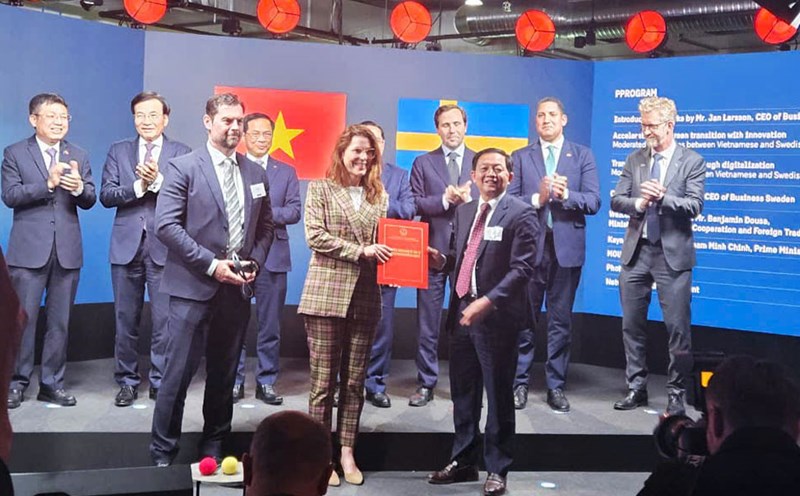Efforts to bring Vietnamese goods closer to consumers
On August 22, the Ministry of Industry and Trade in collaboration with the Vietnam Textile and Apparel Association (VITAS) and the Vietnam Dermatology - Shoes - Handbags Association (LEFASO) held a Conference on "Developing the domestic market of the Textile - Footwear industry".
According to the Domestic Market Management and Development Department (Ministry of Industry and Trade), many solutions have been implemented in recent times to promote the consumption of domestic textile and footwear products. These efforts help Vietnamese goods get closer to consumers, creating a sustainable foundation for the domestic market.
Developing the domestic market not only helps businesses reduce their dependence on exports but also brings opportunities to access international standard products from reputable businesses. This is a parallel direction, both taking advantage of domestic advantages and preparing for global competition.

The leading countries exporting textiles and footwear include China, India, Bangladesh, Turkey, Indonesia and Vietnam. Of which, China accounts for nearly 40% of the global market share, followed by India, Vietnam... The common point is that they all have a very large domestic market, with consumer demand increasing rapidly thanks to the large population and strong support policies.
Mr. Tran Huu Linh - Director of the Domestic Market Management and Development Department - said: "Exporting powers all focus on balancing domestic exports and consumption. The government also requires many domestic product packages, while building brands and improving product quality".
Domestic market space and requirements for building Vietnamese brands
According to the association's report, the scale of the domestic textile and footwear market is about 6-6.5 billion USD, of which clothes account for 5 billion USD, shoes and handbags are 1.1-1.2 billion USD. Currently, 50% of the market share belongs to foreign brands, the remaining 50% is Vietnamese brands, both an opportunity and a challenge.
The biggest difficulties are import- dependent raw materials, weak retail systems and the preference for foreign goods. Even many handicraft products are more expensive than foreign products, making it difficult for Vietnamese goods to compete, especially in rural areas - where Chinese and Thai goods still dominate.
However, there is still a lot of market space as the middle class is increasing, the standard of living is improved, the online shopping trend is developing strongly, suitable for the fashion and footwear industries. This is also the reason why e-commerce platforms such as Lazada, Shopee, Tiki... are invited to attend to discuss solutions to bring Vietnamese goods closer to consumers.
Ms. Nguyen Thi Tuyet Mai - Deputy General Secretary of VITAS - commented: With a scale of 5 billion USD, 100 million people and a 10% growth in the previous period, the domestic market can completely account for 70-75% of the market share. But to achieve this, it is necessary to have the cooperation of the State, businesses and associations.
Accordingly, the State needs to improve market protection policies; enterprises must switch from processing to brand building and domestic development; associations play a role in connecting and mobilizing policies. When these three factors combine, the sustainable development goal will be successful, helping Vietnam both maintain its export position and dominate the domestic market.
Ms. Phan Thi Thanh Xuan - Vice President and General Secretary of LEFASO - said that the association will continue to act as a bridge with the Government, build standards - regulations, promote communication to raise consumer awareness. In the 20262030 strategy, the association and the Ministry of Industry and Trade will build a roadmap for developing Vietnamese brands, with 5 brands in the first year, and 10th year, continuing to increase gradually, gradually forming a strong brand chain, capable of meeting the domestic market and reaching international markets.









